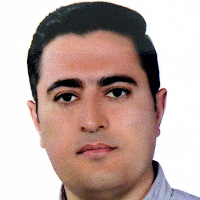Testing Piketty’s Hypothesis in Analyzing Factors Affecting Income Inequality in Iran: Stock-Flow Consistent (SFC) Approach
Reducing inequality and establishing social justice by balancing the distribution of income and wealth is one of the main concerns of economic policymakers which has been emphasized in the constitution in Iran. Explaining the relationship between inequality and its causes has been one of the most challenging areas of economic debate in the recent decades; despite extensive research in this area, there are still many ambiguous issues in this regard. In recent years, new hypotheses have been proposed by the French economist, Thomas Piketty on the main causes of the spread of inequality. In his analysis, he considers the gap between the rate of return on capital and the rate of economic growth (r-g) to be the main causes of inequality. However, despite providing logical explanations consistent with changes in inequality patterns, he has not conducted any empirical tests for its scientific-theoretical chain. Therefore, these question arise as to how empirically verifiable the Piketty hypothesis is and is it able to explain the increase in inequality of different countries? For this purpose, a Stock-Flow Consistent (SFC) model was used as a first model in the present study to investigate the relationship between inequality and growth in a macroeconomic framework of Iran. This model tests the conclusions and Piketty assumptions for the Iranian economy when changing key parameters. The results of this model showed that under certain circumstances with decreasing growth rate, income inequality increases. However, the analysis proved that there are no inevitable conditions under which a reduction in the growth rate will lead to a sharp increase in the level of inequality.
-
The effects of industrialization intensity impulse in the short-term and long-term on the incomes caused by the import tariff in Iran, with the structural vector regression approach (SVAR)
Sajad Nadertehrani, Saeed Daei-Karimzadeh *, Karim Azarbayjani
Macroeconomics Research Letter, -
Examining the effects of Granted facilities to small and medium enterprises on inequality in Iran: the structural vector autoregression approach (SVAR)
Rafi Hasanimoghadam *, Ali Sarkhoshsara
Journal of Public sector economics studies, -
Inflationary Effects of the Foreign Currency Shocks with Different Sources: The Response of Monetary Policy in a Developing Economy
Abdorasoul Sadeghi *, Hussein Marzban, Ali Hussein Samadi, Karim Azarbaiejani, Parviz Rostamzadeh
Iranian Economic Review, Summer 2024 -
Presenting a model for the analysis of policies to deal with the water crisis in Iran
Ebrahim Yousefian, Foad Makvandi *, , Vahid Chenari, Ali Afroos
Journal of Quantitative Studies in Management, -
Designing a Model of Decentralization (Political-Economic) in the Provinces of Iran in the Direction of Optimal Governance with a Mixed Approach
Omid Jalili Ghasem Agha, Foad Makvandi *, Siroos Korahi Moghadam, Vahid Chenari, Arash Jamal Manesh
Journal of Studies of Religion, Spirituality & Management, -
Challenges of Iranian non-oil Exports; with Emphasis on the Markets of Neighborhood Countries
Aziz Ahmadzadeh *, Hamid Naseri, Ali Sarkhosh -Sara
Biannual Journal Eqtesad-e Tatbigi,




